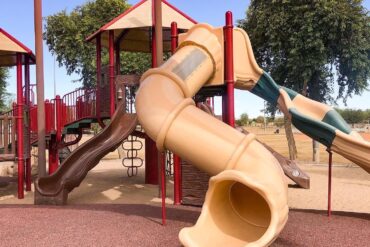Understanding Australian Shoe Sizes: A Parent’s Guide to the Perfect Fit
Hello wonderful parents out there! Are you tired of the guesswork when shopping for your child’s shoes? Fear not, because this ultra-useful guide is going to make you a pro at decoding Australian shoe sizes. We’ll walk through everything you need to ensure those tiny feet have the comfort and support they need as they grow. Let’s hop, skip, and jump right into the world of shoe sizes down under!
A Little Background on Australian Shoe Sizing
Before we dive in, it’s key to understand that Australian shoe sizes can be quite different from American, UK, or European sizes. Typically, Aussie sizes tend to follow the UK sizing chart, but it’s always best to check specific brand guidelines as they can vary.
Also, you’ll encounter separate sizing for boys, girls, and adults—but don’t fret! I’ve got some easy-to-follow tips and a comprehensive chart to help you find that slipper-perfect fit for your munchkin.
Measuring Those Precious Feet
The first step in finding the right size shoe is to accurately measure your child’s foot. Here’s a simple way to do it:
- Have your child stand on a blank piece of paper wearing the socks they would typically wear with their shoes.
- Trace the outline of both feet as close to the skin as possible.
- Measure the length from the heel to the longest toe using a ruler.
- Record these measurements in centimeters as it’s the most common unit for shoe sizing in Australia.
Don’t forget to measure both feet! Often, one foot is slightly larger than the other, so you’ll want to use the larger measurement to find the right size.
Finding the Right Australian Shoe Size
Once you have your child’s foot measurements, use a shoe size chart specific to Australian sizes. Keep an eye out for ‘half sizes’ – these can be especially great for a growing child, providing just that little bit of extra space to grow into without being too large.
Here’s a starter on those sizes:
| Australian Size | Foot Length (cm) |
|---|---|
| 5 | 13 |
| 6 | 14 |
| 7 | 15 |
Note: The table above is a simplified version, and different brands may have slight variations. Always refer to the brand-specific sizing chart when available.
The Importance of the Right Fit
Why is getting the right size so crucial, you ask? Well, shoes that fit well aren’t just comfortable; they’re vital for proper foot development. Too tight, and they can hinder natural growth; too loose, and they can cause blisters or even affect gait.
So, while it can be tempting to size up significantly for growth, aim for about a thumb’s width of extra space from your child’s longest toe to the end of the shoe. This allows for growth, while still giving them the support and protection they need.
Check the Width
It’s not just about length – width is a key component for comfort, too. Some children have wider or narrower feet, and many Australian shoe brands cater to this by offering various width options. These are typically denoted by letters:
- C – Narrow
- D – Standard (medium)
- E, EE, EEE – Wide to very wide
An understanding of your child’s foot width will help you choose a more comfortable fit.
Shoe shopping for your child doesn’t have to feel like a chore. With this guide on Australian shoe sizes, you’ll be well on your way to mastering the art of finding the perfect fit. Armed with a measuring tape and this information, you’re all set to transform the experience into a walk in the (fittingly snug) park for you and your little adventurer!

Five Things Parents Should Know When Preparing for Australian Shoe Sizes
1. Understanding Size Conversions
One of the most common confusions for parents is converting between international sizes. Remember, Australian kids’ sizes are usually two sizes smaller than U.S. sizes. So, if your child is a U.S. size 9, you’ll likely need an Australian size 7. Keep a conversion chart handy or use online tools to convert sizes with ease.
2. The Significance of Proper Measuring
While it’s tempting to guess your child’s shoe size, accurate measuring is crucial to their foot health. This can prevent issues like ingrown toenails, calluses, and general discomfort. Invest in a foot measuring device or visit shoe stores that can provide this service for an accurate measurement.
3. Age is Not Always an Accurate Indicator
Shoe sizes do not directly correlate to age, as children’s feet grow at their own pace. Some kids may have larger or smaller feet than others their age. Always rely on current foot measurements rather than age or previous shoe sizes to make your purchase.
4. The Importance of Trying Shoes On
If possible, have your child try on shoes before buying. Walking around the store in the shoes can help determine if there’s enough room for movement and if there are any immediate discomforts. This is also when to check for that thumb’s width of space at the toe for growth.
5. Seasonal Size Changes
Children’s feet can swell in hotter weather and when they’ve been active. Shop for new shoes later in the day when their feet are likely to be at their largest. Consider the types of socks they’ll wear with their new shoes, as thicker socks in winter affect fit.
Factors to Consider for Different Types of Shoes
Whether it’s running shoes for sports day or sandals for a day at the beach, different types of shoes may require a different fit:
- Sports shoes should provide adequate support and may need to be a bit more snug to prevent slipping while being active.
- Formal shoes worn infrequently should still fit well, but leave a bit of growth room as they’re not worn every day.
- Summer shoes like sandals or thongs should fit well but ensure there’s room around the straps to prevent blisters.
Dealing with In-Between Sizes
If your child is between sizes, opt for the larger size. However, avoid going more than one size up. Shoes that are too big can affect walking and can be just as damaging as shoes that are too small.
Brand-Specific Sizing
Shoe sizes can vary greatly between brands due to different design molds and materials used. Some brands may naturally fit wider or more narrow, so keep this in mind and refer to brand-specific size guides where possible.
Finding the perfect pair of shoes for your child in Australian sizes can seem daunting, but it doesn’t have to be! With these tips, a bit of patience, and your newfound knowledge of sizing, you’ll be all set for a successful shopping excursion. Your child’s feet are constantly evolving, and ensuring they have a great set of shoes to match can make all the difference in their comfort and development. Happy shoe hunting!
For more great articles please see here. For more information see here
Disclaimer
The articles available via our website provide general information only and we strongly urge readers to exercise caution and conduct their own thorough research and fact-checking. The information presented should not be taken as absolute truth, and, to the maximum extent permitted by law, we will not be held liable for any inaccuracies or errors in the content. It is essential for individuals to independently verify and validate the information before making any decisions or taking any actions based on the articles.




